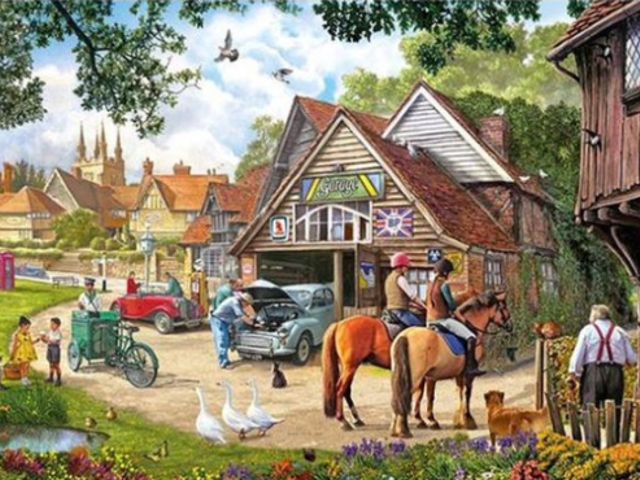Village Tour
At the beginning of the 19th century Edlesborough still had the traditional open fields, unhedged and divided into strips.
By 1865 the open field system had given way to the system of enclosures and the village began to look more as it does today, with a road round the green behind which new Victorian houses appeared, set forward from their predecessors.

Edlesborough Church from Northall Road
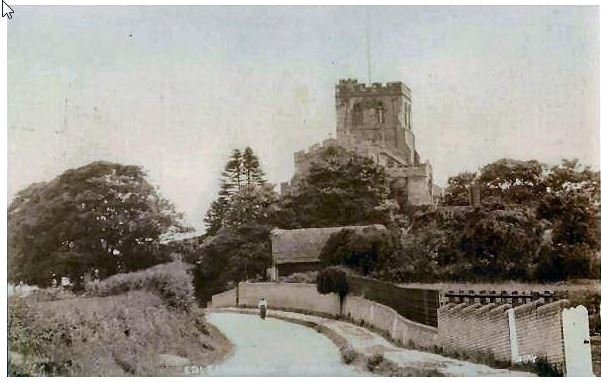
And from the High Street, about 1920
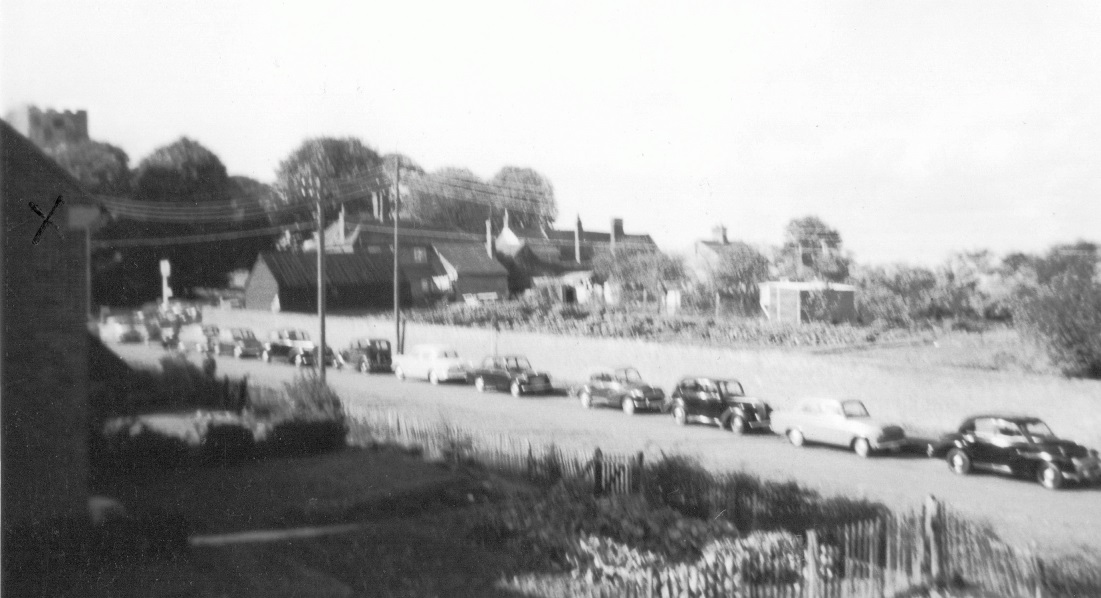
View from Chiltern Avenue, Church on left, probably early 1950’s.
“There were a lot of cars that day. If my memory serves me right there was a BBC film crew who filmed the Sunday service which was then televised. Unusually the church was packed with people that nobody seemed to know. I never remember there being more than about 10 or 12 people attending a regular service.
What some folk will do to get on Tele!” (Dawn Lunnon)

Church End, Northall Road, showing part of the Bell Inn, the Greyhound Inn with its sign about the door and the thatched cottage attached to the 2 cottages.
The next house down was owned by Miss Cheshire, who kept a sweet shop.
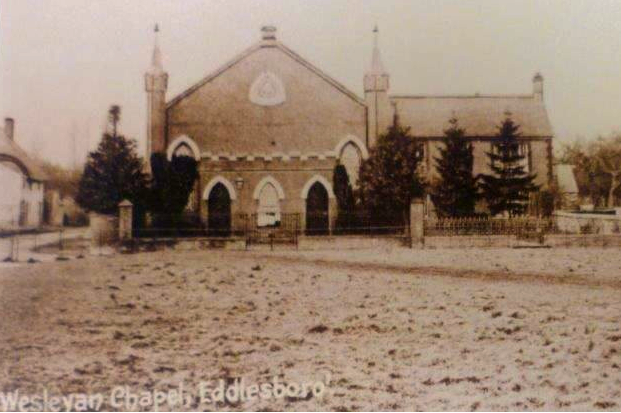
The Methodist Chapel as it was when it was built in 1885, with a spire at each corner and a brick wall and brick pillars at the side.
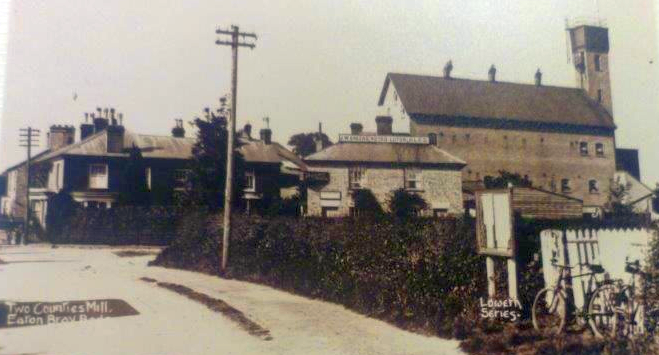
View from High Street towards Brook Street, with allotments on right. The Prince of Wales pub became a private residence in about 1970.
Alfred Thorne's Two Counties Mill can be seen here. The original burned down in 1917 and this is the replacement.

Top of Regent Street, now known as Summerleys.
The man in the cart is Mr. Ben Gray, who was born at the ‘Rule and Square’ and was one of 7 sons of Henry Gray. He started life as a Gentleman’s Servant in Scotland, then later returned home where he married Sophie Janes. They took over this village shop. The horse and cart was used by Ben to collect provisions from Dunstable to sell in the shop.
The Old Edlesborough Post Office, which can still be seen in Brook St, also dealt with the newspapers, which were collected each day from Stanbridgeford station by 2 boys on foot, brought to the Post Office for sorting and delivered by the boys to outlying houses. The boys spent the pennies they earned in the sweet shop next to the ‘Greyhound’ inn.
A carrier went to Dunstable 2 or 3 times a week and, besides taking orders for goods, he delivered the post to the posting station and collected the incoming mail – to send a letter to London cost 1s3d (6 pence). He also took sick people to the infirmary at Hemel Hempstead, and the doctor came from Leighton Buzzard.
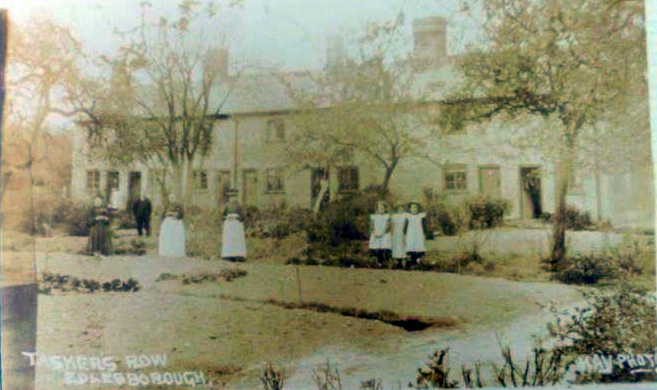
Taskers Row Cottages – about 1913
The Taskers Row terrace has a Victorian facing but most of the block is much older. Traditionally the “taskers” lived here. They were the men who flailed the corn to winnow away the chaff from the ears of corn. The gardens in front, on what was once common land, are reminiscent of the old unhedged strips farmed by large and small holders alike.
These seven 2 bedroom cottages in Taskers Row were part of the Ashridge Estate. Mr Tom Smith rented two for his family of 4 sons and one daughter. After the death of Lord Brownlow in 1921 the trustees of the estate decided to sell the whole estate, giving the tenants the option to buy the property they were renting. One of the sons (Sidney) wanted to buy all 7 cottages, which was agreed “on easy terms” and the cottages were in the Smith family until 1985. In the photo ar Mr Tom Smith, Mrs Fred Thorne, Grandma Mary Ann Smith. Young girls – Mary Smith, x, and Louie Cutler.
